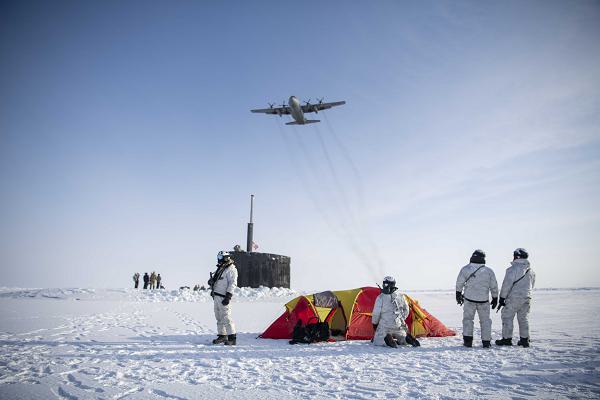
Undisclosed Location. Alaska. (March 9, 2024): Crashing a billion-dollar submarine through solid ice to the surface is no easy task. In this photo by MC1 Jeff Atherton, an Air Force C-130 Hercules flies over a group of Navy SEALs, Norwegian naval special operations commandos, and the attack submarine USS Hampton. The U.S. and Norwegian forces are participating in Arctic Edge, an annual exercise to test submarine capabilities in an Arctic environment.
For years, America’s Navy has used submarines to patrol the arctic seas beneath the ice at the top of the world. While the sea ice gives concealment from observation from above, it is necessary for submarines to punch through that ice to communicate, launch missiles, or support surface activity.
But how does a sub captain know where it is safe to surface?
Today’s advanced submarines use different types of sonar and other sensors including video systems to assess the ice overhead. This upward-looking sonar allows the crew to locate the ice canopy in relation to the sub and find patches of open water or areas of minimal thickness. Once a suitable site has been selected, the submarine sails in a clover leaf pattern until positioned beneath the target area. The submarine must be at zero speed and must go straight up through the ice. The subs are protected by special hardening features applied to their hulls that act as icebreakers during the ascent.
Submarine skippers can also tap into the National Ice Center database that helps subs find places to break through and assistance from arctic operations specialists from the Navy's Arctic Submarine Lab at San Diego, California.


